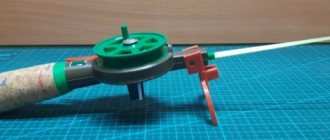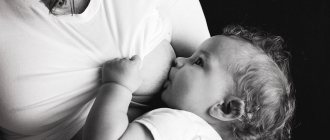Milky Way. Anna Revyakina about the magic of breastfeeding a baby
Breastfeeding is the best way to provide newborn babies with the nutrients they need. WHO recommends exclusive breastfeeding until children are six months of age, and then continued breastfeeding, along with adequate complementary feeding, until they are two years of age or beyond.
Against all odds. Second story: I brought you love
©
Anna Revyakina
It is difficult to write an article on this topic, since such topics are traumatic. There are a huge number of women who, for one reason or another, did not breastfeed their children. They live with a huge sense of guilt. I am one of them. I nursed my firstborn for only three months. But I have to write this note so that moms and dads know that the benefits of breast milk remain even if the feeding was mixed. The positive effects of breast milk last for several years after breastfeeding ends.
It is important to understand: it is not only the woman’s fault that a woman’s experience with breastfeeding does not work out. This is a systemic problem in our society. Of course, mothers need more information and support from doctors, midwives, neonatologists, pediatricians, nurses, family, husband, mother, mother-in-law, boss, etc.
To breastfeed or not to breastfeed?
It seems to me that such a question should not arise at all, but it persistently arises. There are women who protect their breasts and buy into the advertising of formulas. One of the nurses at the maternity hospital misunderstood me and thought that I did not plan to breastfeed my daughter. This was approximately the fourth day after giving birth. The milk has just arrived.
I said that I would not feed the child, leaving out the word “now.” I meant that I had just fed my daughter and she was full. The nurse decided that I completely refused to put the baby to the breast. I saw that she took it normally. It's okay not to breastfeed your baby, although it's not normal! However, the nurse has probably seen a lot in her time and has learned not to be surprised by anything and not to judge anyone.
My mother fed me until I was one year and four months old. She is convinced that my health is so good precisely because she stubbornly, without sparing herself, fed me.
“How was it possible not to feed you,” my mother recalled, “if the formula was pouring out of you like a fountain.”
I listened and smiled: young, I couldn’t believe how formula could pour out of a child like a fountain, but milk couldn’t.
My first child was born when I was twenty years old. I was a fourth-year student at Donetsk National University. My firstborn's diet was mixed: formula and milk. I studied, I had to take classes. Gradually the milk became less and less. Now, looking back, I understand that it was possible to fight for lactation, but I was twenty years old, and I didn’t bother too much.
Against all odds. How to overcome fears during a pandemic and crisis
©
Facebook, Anna Revyakina
I got confused after seventeen years. In the maternity hospital, I had a dream about how I carefully collected excess milk into a bottle and forced my adult son to drink it with the words: “Drink! Immunity is in mother's milk! Better late than never".
This dream is nothing but my fault. Many years ago I did not show persistence, retreated, and did not fight for milk. Now I am fighting for milk and do not feed my daughter with formula. And how can I supplement her feeding if I have a daughter from whom formula flows like a fountain! Mom, you were right! When we were in the Morozov hospital, we were taken off breastfeeding for a couple of days to reduce bilirubin. This is a crude way to deal with this increased rate.
Those days were hell. The daughter categorically refused to drink the mixture. However, she doesn’t drink my milk from a bottle either. Recently I had to go to the hospital, and I left my daughter with my dad. Dad was solemnly presented with a bottle of milk. But my daughter refused to drink it. She waited patiently for the breasts to be delivered, not wanting to settle for a rubber fake and insisting on the original.
Lactation consultant
About fifteen years ago, such a profession appeared - a breastfeeding consultant. Now this fact surprises almost no one. In the first weeks after the birth of my daughter, it seemed to me that I did not have enough milk, and I turned to breastfeeding consultant Polina Olifirova for help. Polina is a Donetsk resident who has been living in Moscow for six years. Polina has been consulting mothers on breastfeeding issues for ten years.
I wrote this note with the help of Polina.
She, like many breastfeeding consultants, came into the profession due to the fact that she herself had problems with breastfeeding at the start of motherhood. None of the doctors could help the young mother.
“I heard phrases that terrify me now,” recalls Polina, “like, what did I think would be easy, etc. I was advised to buy the formula and not torture myself or the child!”
Through her friends, Polina learned that lactation consultants would be trained in Donetsk as part of the UNICEF program. Polina attended the training when her daughter was one year old; it seemed to her that she already knew everything, but after the training she realized that she knew almost nothing.
Formula or milk
“The difference between formula and breast milk is that breast milk is a biologically active liquid that changes depending on the needs of a particular child,” says Polina, “the composition changes depending on the child’s health and age. Each specific milk is tailored to a specific child. Even if the mother gets sick, the composition of the milk changes in such a way as to protect the baby from the mother’s illness. You can often hear that after a year “the milk is empty”, this is not true. The less frequent feedings become, the more immune protective factors appear in breast milk.”
Babies are excellent and not so good. Anna Revyakina about the mysterious newborn assessment scale
©
RIA Novosti, Sergey Venyavsky | Go to photobank
There is a WHO recommendation to feed a child until two years of age or more.
“The minimum feeding period is six months or a year,” says Polina, “after two years the child may well wean himself. All children and mothers are individual, of course, everything should depend on the state of health, if a child is often sick, you cannot stop feeding him too early.”
Mongolia is ahead of the rest of the planet
In Mongolia, breastfeeding is an honorable maternal activity. There is a real cult of breastfeeding and breast milk. Mongolian babies feed only on demand for the first three months, the so-called fourth trimester. They are given breasts for every squeak. The Mongolian mother doesn’t really think much about why the child began to be indignant. In Mongolia, it is absolutely normal to feed until the age of three, but it is still considered desirable until the age of six.
One of the most popular Mongolian sports is national wrestling. It is believed that a boy can become a real fighter only if his mother does not wean him until he is six years old.
Less often, but not to say that it is rare, in Mongolia you can find cases where a child drinks breast milk until he is eight or nine years old. This is considered long-term feeding. Mongolian mothers seriously regret that they had to stop breastfeeding too early if circumstances forced them to wean their child before the age of three.
Public breastfeeding is the absolute norm in Mongolia. Moreover, it is highly encouraged by society. No one will shyly look away; on the contrary, they will come closer and tell the mother in detail how great she is for feeding the child, and will say a bunch of compliments to the baby. It would not occur to anyone that a woman should cover herself or somehow camouflage the process. She may be asked to sit more comfortably, but no one will ask her to go to a separate room.
After all, from the point of view of the Mongols, what she does is sacred.
What do we have?
“As for Russia or Ukraine, a mother breastfeeding her baby in a public place still causes a huge amount of negativity,” complains Polina, “breastfeeding is often compared on social networks to a public bowel movement. They say that you have created such a natural thing here, so let’s not go to the toilet, let’s do our business right in the middle of a supermarket or art gallery.”
It’s strange that people don’t understand that great artists didn’t paint paintings with people emptying their bowels, but they often depicted nursing mothers or wet nurses. This includes Leonardo da Vinci’s “Madonna Litta”, and Pablo Picasso’s “Motherhood”, and many others.
Against all odds. Fourth story: About a man, but for women
©
provided by the author
“And remember the young mother, my namesake Polina Khlynova , who was kicked out of the Tretyakov Gallery because she began breastfeeding her one and a half year old son,” Olifirova recalled, “The caretaker scolded Khlynova, saying that they were being punished for this, that it was indecent, what to feed must be in the designated places. So this incident took place, ironically, in a hall where in the paintings women were breastfeeding babies. After this incident, special signs appeared in the gallery indicating areas where you can feed a child in a calm environment, without attracting attention.”
It so happened that the twentieth century turned the female breast into a sexual object. In fact, breasts are primarily intended for feeding children. We normally perceive girls without underwear in translucent T-shirts. But as soon as you put a baby to this breast, gasps and sighs immediately begin.
For without against
Breastfeeding is a truly wonderful experience, real magic, the magic of unity that arises between mother and child. The first time I breastfed my son, I cried. Tears fell down his cheek. He lay in the intensive care ward and waited for me to come feed him. But it happens that a woman has unpleasant sensations that arise during feeding, and sometimes a woman does not want to depend on the child; feeding is perceived as lack of freedom.
Yes, I am for breastfeeding, but mixed or artificial feeding is no worse. We must understand that everyone has their own life situation.
And finally, I will list all the pros. Breastfeeding helps the mother recover quickly after childbirth, reduces the risk of bleeding in the postpartum period and promotes more pronounced weight loss after pregnancy. The last thesis is often disputed, but this is the evidence of scientific research. Women who breastfeed are less likely to experience postpartum depression and have a reduced risk of breast, ovarian and endometrial cancer. Surprisingly, breastfeeding improves bone mineralization and reduces the risk of osteoporosis and bone fractures in postmenopause.
In addition, feeding is convenient and profitable! Breast milk is always with you and it is always at the right temperature. The economic benefit is about 70 thousand rubles per year. This is exactly how much young parents spend on adapted milk formulas for their baby. But that is not all! Breast milk can reduce the incidence of illness in children, and parents will not spend money on treatment. The number of hospitalizations and doctor visits is reduced, as is the risk of sudden death.
Against all odds. Third story: First day at home
©
RIA Novosti, Kirill Kallinikov | Go to photobank
Breastfeeding reduces the risk of type 2 diabetes and cardiovascular diseases (including stroke, hypertension, coronary artery disease, atherosclerosis) in the mother and strengthens the psycho-emotional contact between mother and child. There are studies that breastfeeding improves cognitive development, speech, motor functions and IQ scores. In premature babies, breast milk reduces the risk of necrotizing enterocolitis, sepsis, retinopathy, bronchopulmonary dysplasia, improves neurological outcome and the development of hearing function.
Breast milk stimulates intestinal motility and maturation and properly forms the intestinal microflora in children. Children who are breastfed are less likely to suffer from malocclusion. Milk protects against serious diseases: it reduces the incidence of obesity, cancer, coronary heart disease and lipid profile indicators in older age, allergic conditions, diabetes, etc. The degree of protection increases with the duration of breastfeeding.
Many of the positive effects persist even when breast milk is supplemented with formula.
SEVERAL VARIETIES OF APPLICATION TO THE BREAST
Lactase deficiency (LD) is a disease in which lactose is not digested. There are several types of pathology, each of them has its own characteristics.
If a baby has lactase deficiency, his body cannot digest lactose.
Types of lactase deficiency:
- Congenital LN. It is provoked by a breakdown in the LCT gene, located on chromosome 21.
- Primary. A form of the disease that is caused by a decrease in the activity of the lactase enzyme, which breaks down lactose.
- Secondary. Triggered by damage to the intestinal mucosa caused by diseases of the digestive tract or surgical interventions. Appears mainly in adults.
- FN of premature and immature children. This is explained by the insufficient formation of the digestive organs, which are involved in the breakdown of lactose.
There is a concept of functional lactase deficiency, it is also called transient. However, it is believed that this name is erroneous, since the lactase enzyme molecules in premature infants are fully formed. Symptoms of the pathology are caused by an insufficient amount of the enzyme that breaks down lactose.
We invite you to familiarize yourself with the circle for bathing newborns: benefits and harms
LN has nonspecific symptoms, which is why the disease is not always detected on time. The symptoms of the disease are very similar to colic and increased gas formation that appears during the adaptation of the digestive tract to milk and artificial nutrition.
To confirm lactase deficiency, the doctor prescribes special tests.
Symptoms of LN:
- diarrhea syndrome, increased urge to defecate;
- foamy stool;
- increased gas formation;
- weight loss, loss of fluid in stool;
- the baby’s poor appetite, lethargy, loss of strength;
- severe crying for no apparent reason, anxiety.
One of the most serious consequences of the disease is dehydration. Loss of fluid is very dangerous for an infant. Dehydration is manifested by dry skin, decreased activity of the baby, decreased amount of saliva, sunken fontanel and even convulsions.











